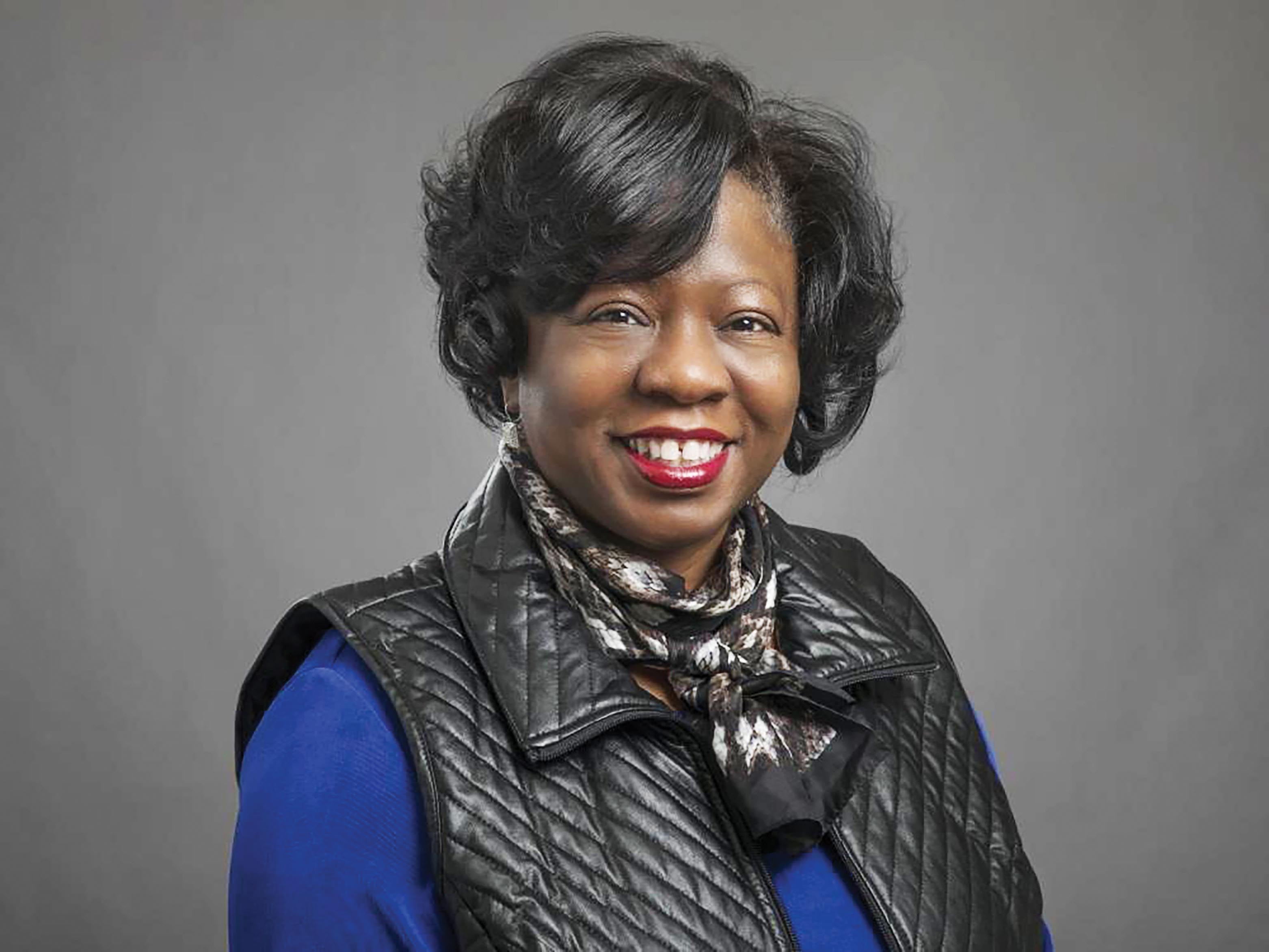To achieve health equity and improve health outcomes for diverse and marginalized racial and ethnic minorities, the nursing workforce must mirror the U.S. population. Yet despite decades of effort, the profession remains predominantly female and White. As the United States marches toward a minority majority, nursing diversity has never been a more critical objective.
Diversity Is Essential to Nursing Practice
“Diversity leads to different viewpoints and that adds value to understanding our business, our organization, and our society at large,” ONS member Joseph D. Tariman, PhD, MBA, ANP-BC, FAAN, associate professor of nursing and associate director for the doctor of nursing practice (DNP) program at DePaul University in Chicago, IL, and past president of the Chicago ONS Chapter, said. “Whatever work setting it is, whether a professional organization, university, school of nursing, or medical center, diversity offers a substantial competitive advantage.”
Phillips added that promoting diversity is central to ensuring that patients and providers feel respected. Researchers have found that patients experience better outcomes when receiving care from providers with cultural congruence and similar backgrounds.
Additional benefits, Tariman said, include:
- Creativity: Collaboration is more comprehensive, integrated, relevant, and meaningful to all the stakeholders.
- Marketing: Diverse voices help an organization better understand the different market segments of clients or customers.
- Problem-solving: Different perspectives can identify unknown or unexplored aspects of a problem.
- Resource acquisition: Diverse organizations can be viewed as best places to work, thus attracting and retaining staff.
- Systems flexibility: A diverse organization is more pliable and responsive to change.
Diversity in Race and Gender
“The overall goal is to have a nursing workforce that mirrors the U.S. population,” Phillips said. “This is crucial as we move to achieve health equity and improve the health outcomes of diverse and marginalized racial and ethnic minorities.”
Today, if you enter 20% of American households, you’ll hear a language other than English. According to the most recent estimates:
- Roughly 76% of the U.S. population identify as White.
- Hispanic or Latinx individuals comprise 18.5% of the population, followed by:
- Black or African (13.4%)
- Asian (5.9%)
- Native American, Pacific Islander, or Alaska Native individuals (1.5%).
In the most recent National Nursing Workforce Survey:
- Nearly 81% of RNs working in the United States identified as White or Caucasian.
- Asian RNs comprised the largest workforce minority (7.2%).
- Black or African American RNs increased from 6% in 2013 to 6.7% in 2020.
- Hispanic or Latinx RNs also increased slightly to 5.6%.
- American Indian and Alaska Native populations represented 0.5% of the nursing workforce and Native Hawaiian and Pacific Islanders represented 0.4%.

In 2019, for the first time in U.S. history, more than half of the nation’s population aged 16 or younger identified as a racial or ethnic minority. As minorities transition to the majority of the U.S. population, nursing must recruit a workforce that better reflects those communities.
People who identify as male accounted for 9.4% of the RN workforce in 2020, an increase of 0.3% since 2017. In 2020, NNWS authors added a third gender response option of “other”: although the numbers are small, 0.1% of U.S. RNs identified as such compared to 0.6% of the overall U.S. population. Increasingly, people are identifying the pronouns they use, and nurses must recognize other pronouns, such as they, xe, and ze, in addition to she/her and he/him binary pronouns.
“The share of male nurses has been increasing over the past three decades that I’ve been practicing,” Tariman said. “Male nurses are more socially accepted now.”
Two key gender-related trends are that men are more likely to enter nursing as a second career, and an increasing number of men are taking up leadership roles in university health systems. The latter raises awareness of nursing career opportunities for male college students and increases availability of male faculty for mentoring and support.
However, Tariman noted that most male nurses are largely attracted to the emergency room, critical care, and anesthetist specialties. According to the American Association of Nurse Anesthetists, more than 45% of the specialty is male, a disproportionate ratio to the overall nursing workforce. In oncology, the gender makeup is more in line with national averages: about 6% of ONS members identify as male.
Misconceptions About Nursing Diversity
“A misconception that comes to mind right away is that male nurses are less caring or less compassionate than their colleagues,” Tariman said. “Caring and compassion can’t be attributed to gender, rather to the character of the nurse regardless of gender.”
Gender stereotypes in the nursing profession negatively affect the success of male nursing students and reduce retention among male RNs, contributing to the profession’s staggering gender ratio.
“Another misconception and maybe even expectation is that racial and ethnic minority nurses will bear the sole responsibility for educating others on diversity and cultural competency,” Phillips said. “Although minority nurses bring a unique perspective and lived experience, they should not be the only person creating and sustaining a culturally sensitive and antiracist environment.”
What Phillips described is called tokenism, which happens, for example, when a Black person is surrounded by White coworkers on a diversity committee. In that situation, the sole Black person is put in a position to speak on behalf of the entire African diaspora on various topics.
Not all attempts to promote diversity are tokenism, but a few additional examples include:
- Referring to someone to by an identity group whereas others are not (e.g., “our Asian board member”)
- Asking someone to present at conferences, but only about being a person of that identity group in that field rather than their work standing on its own (e.g., “being a woman in tech”)
Tokenism can be lonely and have negative effects on mental health. It can make someone feel both invisible (underrepresented) and incredibly visible (immense pressure and scrutiny to represent an entire group of people), which can even tempt them to overwork to be a “good” representative of their identity group and lead to exhaustion, guilt, shame, and burnout.
“Although those minority individuals and their expertise are valuable, we need an all-hands-on-deck approach to diversity where everyone assumes some responsibility in establishing and maintaining diversity programs and initiatives,” Phillips said.
Diversity in Nursing Students and Faculty
“Many institutions are becoming intentional about their outreach to racial and ethnic minorities and creating partnerships with like-minded professional and lay organizations committed to increasing diversity,” Phillips said.
Since 2020, nursing colleges and schools have increasingly hired associate deans of diversity, equity, and inclusion to spearhead and support the recruitment and retention of a diverse faculty and student body, she said.
“Individuals in that role will also ensure an antiracist culture where all are included, respected, valued, and welcomed,” Phillips said. “This is a chief cornerstone for ensuring a sustainable diverse nursing workforce now and into the future.”
Phillips said that her university has strong partnerships with several high schools throughout Chicago’s diverse West Side. “Rush University exposes those students to careers in the health profession, and our nursing faculty and staff give presentations when the kids come to our campus,” she said. “Our Office of Community Engagement is very active with high schoolers and connects them to volunteer opportunities.”
In his work with his university’s DNP program, Tariman and his faculty also conduct community outreach programs at high schools known to have higher ratios of Asian, Black, Hispanic, and Latinx student populations, and the efforts proved beneficial when universities needed it most. “As the largest Catholic university in the country with more than 20,000 students, diversity is at the top of our strategic initiatives and is embedded in our core values,” he said. “In 2021, as other universities experienced enrollment shortages, DePaul University and our school of nursing had a record enrollment with more than half of our entire student populations coming from various races, ethnicities, and national origins.”
Diversity in Your Institution
Tariman and Phillips agreed that staff nurses should understand two concepts: (a) learn from the diversity that exists in their institution and apply it to their advocacy and practice, and (b) human connectedness is a powerful tool to dissolve stereotypes and foster an environment of inclusion.
“Staff nurses, I encourage you to dig deeper into your own institution’s diversity data and raise awareness among your colleagues,” Tariman said. “Celebrate diversity, respect and honor diverse beliefs and holidays, and build relationships with patients and colleagues who are different from you. All this will make you and your institution stronger.”
“Start by becoming better acquainted with the people you work with and work for, especially if colleagues and patients are of a different background,” Phillips said. “Usually, you can find someone at your institution who is willing to share their cultural beliefs and practices.”
See the sidebars for an array of resources from ONS and others on connecting with and supporting diverse patients and providers.
Tariman and Phillips also agreed that diversity, equity, and inclusion must be more than buzzwords.
“Nurse leaders have to put their money where their mouth is. Diversity must be a living, breathing, and dynamic matter embedded into an organization’s policies, mission, and vision statements,” Tariman said. “Achieving an efficient and diverse workforce is not a walk in the park. It requires a deliberate plan of action, implementation strategy, and approaches to sustain it.”
“Staff and potential staff need to know that leadership has a strong commitment to the issues and that their institution models behaviors that reflect that commitment,” Phillips said. “There is also a need for advocacy. Nurse leaders must advocate for funding and resources to recruit, support, and retain a diverse workforce. This can range from special scholarships, internal promotions, or staff development workshops on diversity, equity, and inclusion.”
Phillips encouraged nurse leaders and administrators to begin by asking themselves:
- How will others know we are serious about diversity, equity, and inclusion?
- Is our organization’s commitment to those issues reflected in mission statements, strategic plans, and activities?
- How will internal and potential newcomers know that the organization values diversity and supports the career development of a diverse workforce?
- Are there guidelines for being a culturally responsive and linguistically appropriate organization? And if so, who is accountable for widespread operationalization?
“Transparency is crucial to achieve equity in all levels of nursing, from staff nurses to administrators,” Tariman said. “Leaders must pay close attention to equity at all levels and consistently adapt to the changing landscape of doing business.”
Nursing’s Diverse Future
Diversifying the workforce, increasing health equity, and ending structural and institutional racism in nursing were key factors in the National Academy of Medicine’s Future of Nursing 2020–2030 report.
Tariman and Phillips both said that the nursing profession has made immense strides in becoming more diverse and equitable, but that progress is just the beginning and that intensified and sustainable efforts will ensure a more diverse student body and nursing workforce.
“There is no substitute for getting to know one another and working with a shared sense of respect, collegiality, and inclusion. Exchanging stories and being intentional about learning and respecting differences have immense value,” Phillips said. “I think we should all strive to treat people as we wish to be treated. Anything less will delay our efforts to accomplish diversity, equity, and inclusion.”
“Always remember that amidst our diversity is our shared humanity. We all have goals, dreams, and aspirations,” Tariman said. “Don’t wait for others to lead you to a diverse student body, organization, or nursing workforce. You can pave the way. Keep trying until you see the change you want for a better workplace, life, and world.”






